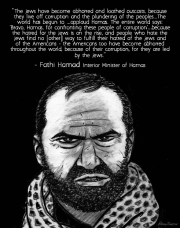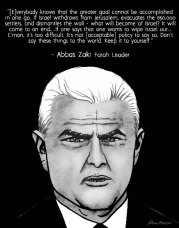An Introduction to the ICT’s
Islamic Radicalization Index (IRI)
As the tempo of radical Islamism is accelerating in the West, the agents and their means of Islamic radicalization irrefutably pose an existential threat to the core liberal values of western civilization. It is in this context – the increase and spread of Islamic radicalization in the West – that the International Institute for Counter-Terrorism (ICT) is proud to present the Islamic Radicalization Index (IRI). The IRI includes articles, essays, opinion pieces and briefing notes, written by ICT Staff, Fellows and Interns dealing both with theory and empiricism of Islamic radicalization. The IRI will also offer country-by-country analyses of trends in Islamic radicalization. These reports seek to demonstrate, within the confines of national borders, how, why and by whom Islamic radicalization is proliferating in each nation-state. Ultimately, it is the purpose of the ICT to offer the international community a new outlet that seeks to discuss and educate the growing issue of Islamic radicalization in the West.
The radicalization of sections of Muslim populations around the world began long before the attacks of September 11, 2001 and the so-called ‘Global War on Terror’, the war in Afghanistan and the war in Iraq. The process that has come to be known as ‘Islamic Radicalization’ is in fact nearly as old as the religion itself. From the first signs of internal religious strife within the inchoate Muslim World in Arabia, there have been countless actors who have since attempted to radicalize their populations, usually by way of a distortion of the original teachings of Islam. However, while the process of radicalization has transformed greatly over the last 1,300 years, and even more so in modern times, the nature of Islamic radicalization shares common denominators that have remained static. That is, while certain characteristics of radicalization have clearly altered over time, such as the agents and the means, the core of Islamic radicalization has remained the same: the spread of a radical, intolerant, violent, and ultimately distorted version Islam with an end goal of establishing a global Caliphate. This is the common denominator of Islamic radicalization that has spanned more than a millennium.
The agents range from as early as the Kharijites to the writings of influential radical thinkers, such as Ibn Taymiyyah and Muhammad ibn Ab-al-Wahab. More recent figures include Abul Ala Maududi, Sayyid Qutb, Abdullah Azzam and subsequently Osama Bin Laden, Ayman al-Zawahiri and Muhammad Abd al-Salam Faraj. While the agents have altered over time, so have the means, which is equally important to the radicalization process, as agents and means of Islamic radicalization share a symbiotic relationship. Advancements in, and the subsequent spread of technology, has allowed for Islamic radicalization to be unconstrained by space and time. Books are no longer confined to libraries and stores but are now available for immediate downloading via the Internet. Radical religious sermons are no longer restricted to a specific mosque intended for a particular community, as they are now broadcasted – at times live – by way of the World Wide Web. Discussions are no longer limited to a small group but rather are available to millions of members of forums and discussion boards. Detailed plans illustrating how to perpetrate terrorist attacks are widely available online, including gruesome videos of beheadings and other acts of terrorism, which are all disseminated over the Internet within seconds. Satellite phones, video recorders, encrypted email, and GPS procurement, are but a few means that aid the process of Islamic radicalization in our hi-tech and information age. Resultantly, the radicalization process of Muslims is unhindered by time, space, and law.



































Leave a comment